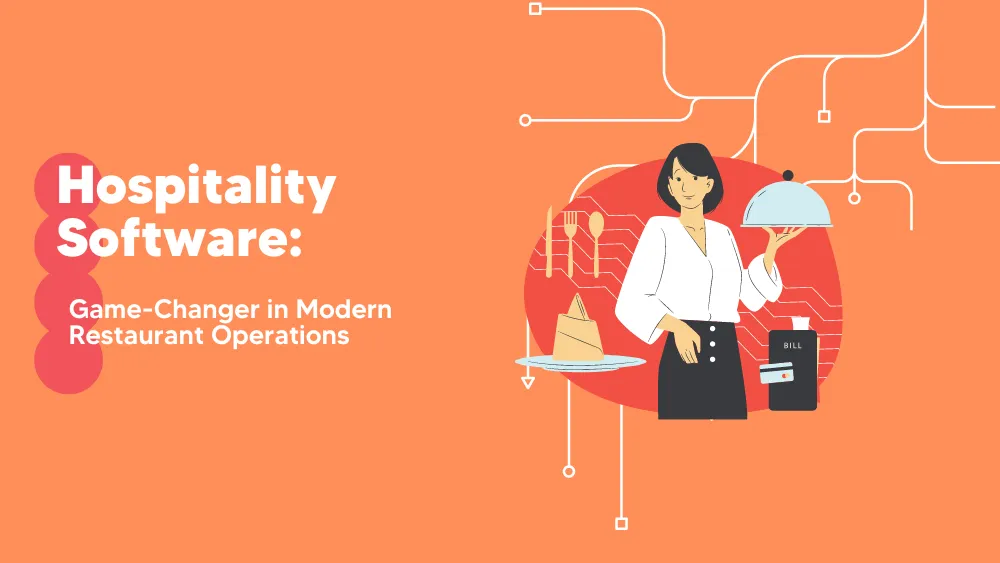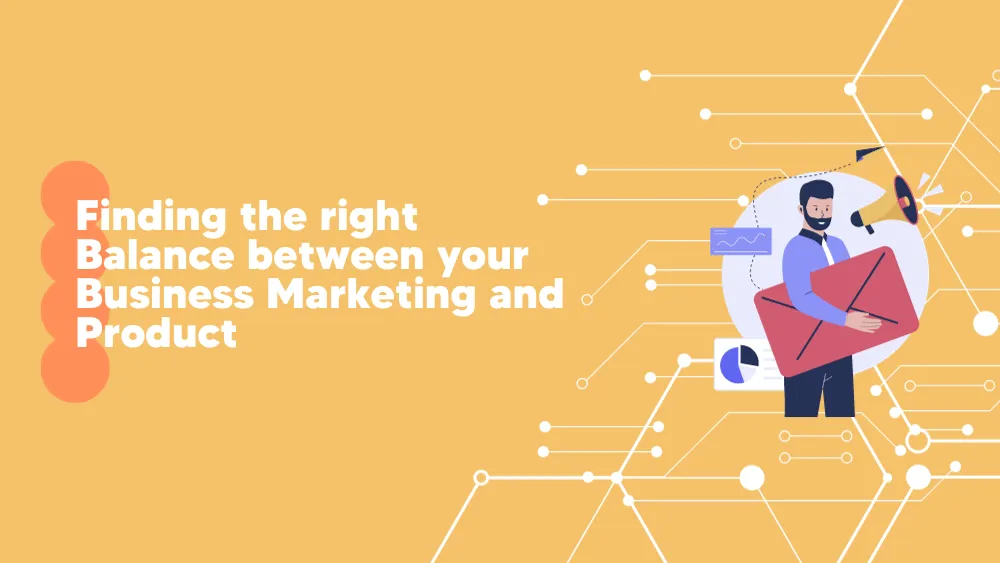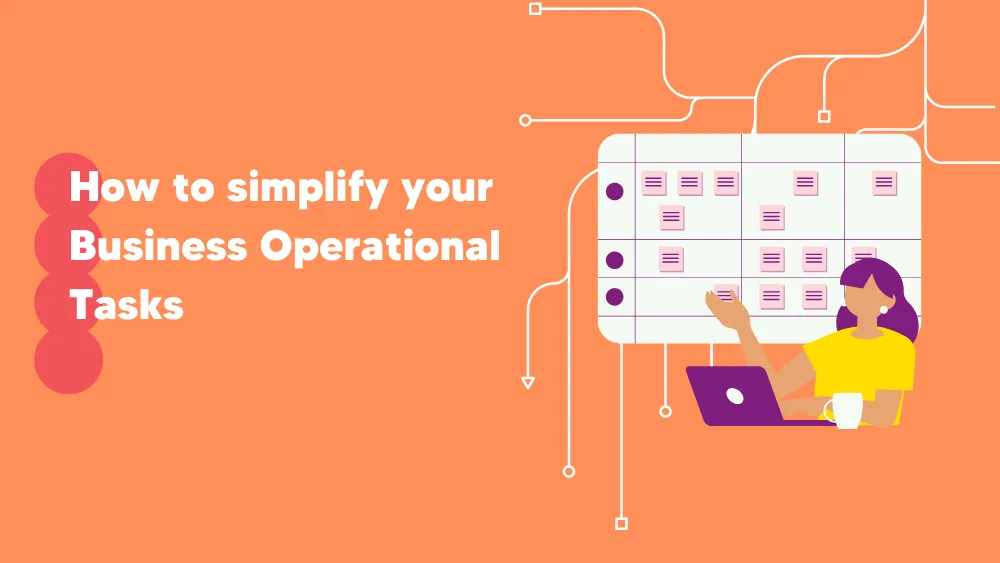Think running a restaurant is all about the perfect risotto? In the digital era, it’s also about the perfect reservation system. Hospitality software is the magic ladle of modern restaurant operations, transforming scattered efforts into a symphony of efficiency. It’s a seemingly bland pair of words that, when served, form a five-star feast of technological advancements. With its increased demand for speed and precision, the culinary realm is like a never-ending dinner rush.
Peeling back the layers, this digitized dynamo is the Gordon Ramsay of restaurant management – a little flair, many efficiencies, and occasional moments of fiery intensity. It expertly manages everything from staff rosters to inventory, from reservations to that crucial diner-to-dessert journey, ensuring that every plate of food served is a testament to perfect harmony between man and machine.
Hospitality software isn’t just changing the game – it’s serving up a whole new league. Like the head chef presenting a signature dish, it’s turned traditional restaurant operations on their heads, adding the cherry to the sundae of dining experiences.
What is Hospitality Software
Imagine the diverse activities that take place in a restaurant: waitstaff managing orders, managers overseeing the entire operation, chefs preparing meals, and customers engaging with the service. The hospitality software works as an integrating platform that brings coherence to these activities, ensuring seamless interaction and operation.
This restaurant management software comes packed with numerous features that cater to the different needs of a restaurant business. It manages reservations, maintains a customer database, keeps track of inventory, and administers payroll. It turns complex manual tasks into simple automated processes, significantly reducing the likelihood of human errors and enhancing overall operational efficiency.
Types of Hospitality Software used in restaurants
While hospitality software could be viewed as a single entity, it’s a collective term for many digital tools. Let’s pop the hood and take a closer look at some of the most common types used in restaurants.
-
Point of Sale (POS) Systems
These are the digital cash registers of today but with extra bells and whistles. Beyond merely handling transactions, modern POS systems integrate with other operations. They manage orders, track sales, and can even handle customer relationship management tasks. These systems are a must-have for restaurants aiming for smooth day-to-day operations.
-
Reservation Management Systems
Gone are the days of manually penciling in reservations. These systems allow customers to book tables at their convenience, providing a live, updated layout of available seating. They can also track customer preferences, enhancing personalized service. It’s like having an always-on-call host ready to assist customers.
-
Analytics Tools
Restaurants generate a lot of data, from sales figures to customer feedback. Analytics tools are the sieve to filter through this data deluge, providing actionable insights. They can reveal patterns, trends, and areas of improvement, shaping smarter business strategies.
-
Employee Management Systems
These tools are the modern answer to HR management. They handle everything from employee scheduling and task assignment to tracking performance. No more Excel sheets or paper-based timesheets, just streamlined, efficient workforce management.
-
Customer Relationship Management (CRM) Systems
Customer is king, and CRM systems help you treat them that way. These tools manage customer profiles, track dining preferences, and enable targeted marketing. They help create a personalized dining experience, turning first-time diners into regular patrons.
Enhancing Efficiency and Streamlining Operations
Hospitality software has introduced a significant leap in operational efficiency within the restaurant industry. It’s as if someone pressed the ‘easy button’ on all those routine tasks that previously consumed time and effort, helping restaurants function like well-oiled machines.
When we talk about efficiency and streamlined operations, one of the first things that come to mind is the automation of routine tasks. Hospitality software has been instrumental in this regard. From managing reservations to taking customer orders, from inventory control to transaction processing, tasks that once required manual effort and introduced potential for error are now handled swiftly and accurately by these digital systems.
For instance, POS systems are vital in streamlining the order-taking process. Customers place their orders instantly relayed to the kitchen – no more misplaced order slips or miscommunications. Everything is tracked in real-time, which means quicker turnaround times and less opportunity for human error.
Regarding inventory management, POS systems are a restaurant’s best friend. They constantly monitor stock levels, automatically updating based on order intake. If an ingredient runs low, the system sends an alert, preventing awkward moments when you tell a customer their favorite dish is unavailable. Some systems can even automate the reordering process, ensuring a steady supply of all necessary items.
And, of course, they easily handle transactions by accommodating various payment methods, promptly processing payments, and generating receipts, all while recording the data for future reference and analysis. This provides convenience for customers and simplifies financial tracking for the business.
In essence, hospitality software, and POS systems, in particular, have given restaurants a much-needed digital makeover. They’ve automated routine tasks, reduced the potential for errors, and greatly enhanced efficiency, allowing restaurant staff to focus on what truly matters – delivering outstanding food and service to their customers.
Benefits of using reservation tools
Efficient Table Management: Hitting the High Note in Operations
One of the shining stars of reservation software’s feature set is its ability to provide a real-time overview of restaurant seating. Think of this as your restaurant’s command center, providing a bird’s eye view of each table’s status – is it occupied, reserved, or ready to welcome new guests?
This capability allows for optimized seating arrangement and rotation. It ensures that every available table is used to its full potential, significantly increasing seating capacity. And what does that mean? You’ve got it – higher potential revenues.
Reduced Waiting Times: Winning the Waiting Game
The waiting game is not a favorite among diners. Who enjoys lingering in the waiting area when they could be sampling your delectable dishes? That’s where reservation software swoops in and saves the day.
Customers can book their tables in advance at a time that suits them. They can stroll into your restaurant at their reserved time, get seated immediately, and start their dining experience without delay. This convenience significantly reduces wait times and ensures diners a smoother, more enjoyable experience.
Personalized Service: Taking Customer Satisfaction up a Notch
Another key advantage of reservation management software is its ability to personalize the dining experience. Many of these tools can track and store customer preferences and previous orders, creating a valuable database of information.
With this knowledge, your restaurant can tailor the dining experience to individual customers. Is there a customer who always requests a specific table or prefers vegan options? You can note these preferences in your system, surprise them with their favorite table the next time they book, and suggest new vegan dishes. This level of personalized service can significantly enhance customer satisfaction, encouraging repeat visits and fostering customer loyalty.
Staff scheduling
In the toolkit of modern restaurant management, staff scheduling and labor management software have established themselves as must-have. This dynamic software solution serves as the cornerstone for efficient workforce allocation, transforming what was once a complex puzzle into a smooth and streamlined process. Here’s what you gain by using them:
-
Optimized Workforce Allocation: Assembling the Perfect Team at the Perfect Time
One of the most compelling advantages of these tools is their ability to facilitate seamless management of shift schedules, task assignments, and workforce balancing. It’s like having a virtual floor manager at your fingertips, guiding your team through the hustle and bustle of a restaurant day.
With these tools, you can easily assign staff to shifts, ensuring you have the right number of staff on hand during busy periods and avoiding overstaffing during quieter times. The result? Your restaurant functions like a well-tuned orchestra, with every staff member playing their part at just the right moment.
-
Reduced Labor Costs: Striking the Balance between Service and Savings
As the old saying goes, too many cooks spoil the broth – but too few can also spell disaster. These tools improve service quality and reduce unnecessary labor costs by ensuring you maintain the perfect staff balance for each shift.
Imagine the scenario where your restaurant is unexpectedly quiet on a Tuesday night. If you’ve overstaffed, you’re paying wages for idle time. Staff scheduling tools help avoid these situations, aligning your workforce size with expected demand.
-
Simplified Payroll Management: Making Payroll as Easy as Pie
Another slice of brilliance offered by these software tools is their ability to simplify payroll management. Features such as time-tracking and seamless integration with payroll systems turn what could be an administrative nightmare into a cakewalk.
With precise tracking of each employee’s work hours and easy synchronization with payroll systems, these tools ensure paychecks are accurate and punctual. It reduces the chances of disputes over pay, increases staff satisfaction, and lets you focus on what you do best – running your restaurant.
Elevating Customer Experiences
From online reservations to personalized service, Customer Relationship Management (CRM), and managing reviews, hospitality software is reshaping the customer journey. This isn’t merely about automating processes or introducing digital interfaces; it’s about using technology to sprinkle magic on every dining experience.
It helps restaurants to offer a level of service that was previously unthinkable. It’s the equivalent of rolling out the red carpet for every diner, ensuring they feel valued, attended to, and delighted at every step.
The effect extends beyond the duration of a meal. By enabling personalized marketing campaigns, loyalty programs, and feedback management, hospitality software ensures a sustained relationship between the restaurant and its customers. This relationship continues to evolve and strengthen, resulting in higher customer loyalty and increased repeat business.
Essentially, it is no longer just a tool for the restaurant; it’s become a catalyst for creating memorable dining experiences. It’s transforming how restaurants interact with customers, making every meal a symphony of delightful interactions. This harmony between digital and physical experiences is defining the future of the restaurant industry – and it’s a future that’s looking incredibly appetizing.
Online reservation systems
Let’s face it; convenience is king. And that’s where online reservation systems come in, making them as essential to restaurants as a good chef. Customers can book a table from anywhere, anytime, allowing them to plan their dining experience according to their schedule.
But it’s not just about snagging a table. These systems also capture personalized preferences and special requests. So whether a customer wants that romantic corner table or has a special dietary requirement, these systems help make their dining experience a breeze.
CRM for restaurants
Customer Relationship Management (CRM) software is like a gold miner, sifting through customer data to uncover valuable nuggets of information.
By gathering and analyzing this data, restaurants can personalize their marketing campaigns, build targeted loyalty programs, and design special offers that hit the mark.
For example, suppose a CRM system identifies a group of customers who frequently order vegetarian dishes. In that case, the restaurant can roll out personalized offers or new menu items catering to their preferences. It’s all about making the customer feel special and understood.
Manage your reviews from clients
Monitoring customer reviews allows restaurants to address issues promptly, and an effective response can turn a negative experience into a positive one. It’s about showing customers you’re listening and value their feedback, and this helps improve service quality and strengthens customer relationships, boosting customer loyalty and satisfaction in the long run.
Driving Growth and Business Insights
Analytics Tools: The Magnifying Glass on Sales and Trends
Undoubtedly, in restaurant operations, analytics tools stand as an invaluable resource. They delve into sales data, customer behavior, and market trends, pulling out the patterns and insights that might otherwise slip under the radar.
Imagine you’re noticing a slump in your sales. An analytics tool can zoom into your data and analyze the specifics of sales trends, the most popular (or unpopular) items, peak hours, and customer preferences. This granular view of your operations allows you to identify growth opportunities and areas for improvement. It’s about maximizing your data and transforming it into actionable strategies.
Real-Time Reporting and Data Visualization: Clearer, Quicker Decisions
One of the highlights of hospitality software is its ability to provide real-time reporting and data visualization. These features transform complex data sets into digestible and visually engaging reports. You can make faster, more informed decisions by seeing your restaurant’s performance metrics presented clearly and updated in real-time.
Loyalty Program Integration: The Secret Ingredient for Retention and Growth
Integrating loyalty programs with hospitality software is like hitting two birds with one stone. On the one hand, it offers an avenue for rewarding loyal customers, fostering a sense of appreciation, and increasing customer retention. On the other, it opens up opportunities for revenue growth.
Conclusions
In conclusion, hospitality software has proven to be a game-changer in modern restaurant operations. It is more than a facilitator of day-to-day tasks. Integrating multiple aspects of restaurant management into a singular platform is vital in enhancing efficiency, elevating customer experiences, and driving growth.
It streamlines operational tasks, from managing reservations to payroll, providing real-time data and actionable business insights, ultimately enabling smarter, data-driven decisions.
Part of the very competitive industry, restaurants that can leverage the power of hospitality software stand to gain a significant edge. From creating personalized dining experiences to identifying sales trends and managing loyalty programs, this technology revolutionizes how restaurants interact with customers and manage their operations.
Looking ahead, it’s clear that the successful restaurant of the future will be built on a foundation of effective hospitality software, carving out a path to a prosperous and delicious future.








